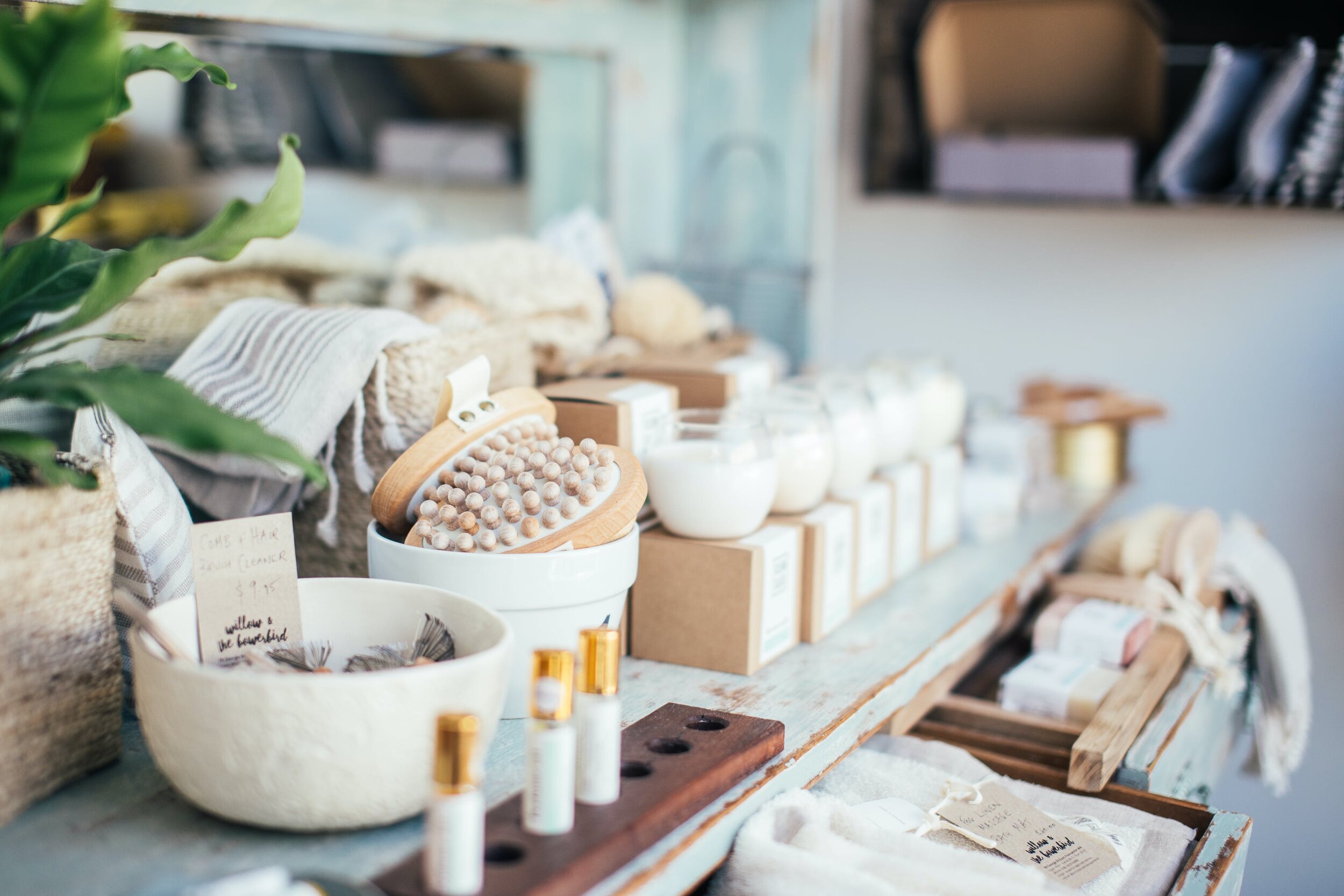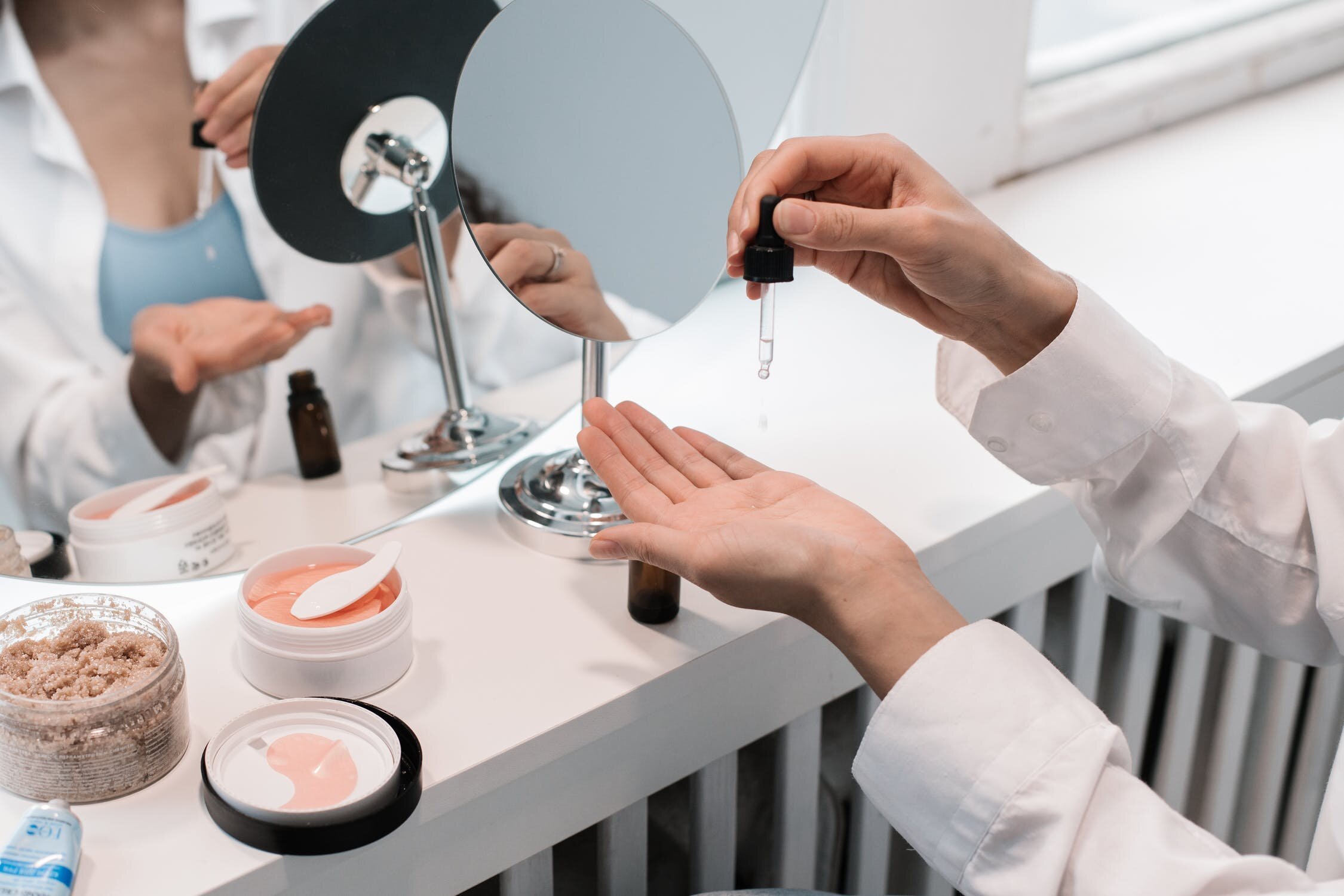Best practices for marketing your CBD Self-Care Products.
I think everyone can agree that CBD and Hemp self-care is a unique and still developing trend within the lifestyle industry. The CBD market has rapidly gone from fringe to front-and-center and is projected to total more than $20 billion in domestic sales by 2024. Mainstream retailers like Walgreens, Sprout, CVS, Ulta Beauty, GNC Holdings, Urban Outfitters that are actively promoting the sale of CBD skincare and lifestyle products.
And while we see more and more CBD brands spring to life with each passing day it’s important to note that making inroads into this market is not as easy as it might seem. Simply incorporating the ingredient into a skincare blend and hoping you’ll catch the CBD wave is not without its pitfalls. It’s important to consider the following steps before launching or going further with CBD self-care:
There’s more to marketing CBD products than you think
What Ingredients Are Allowed
Marijuana, and its derivatives including CBD and Hemp, is still considered a schedule I substance.
According to Katherine Pfaff, a spokesperson for the DEA, “If the product does cause THC to enter the human body and/or contains greater than 0.3 percent of THC, it is an illegal substance that may not be manufactured, sold or consumed in the United States. If, however, the product does not cause THC to enter the human body and contains less than 0.3 percent THC, it is a non-controlled substance that may lawfully be sold.” (via GMA)
The FDA is in the midst of creating guidelines for CBD manufacturers and will likely eliminate some manufacturers currently participating in the CBD boom and open the door to some large scale, mainstream manufacturers. The details of the FDA regulations will inform the specifics of how large the OTC piece of the CBD pie becomes. (via Forbes)
If you’ve created or are creating a CBD product you’ve probably done your research on these elements and much depends on how your particular CBD is obtained. The THC portions of the cannabis plant include the flowering tops (buds), the leaves and the resin of the plant. The remainder — the stalks and sterilized seeds — is where most CBD comes from. However, producers can also obtain it from the THC portions in which case it might yield a mixture of THC and CBD.
Whether your product contains THC or not, there are still pretty strict limitations on how you’re allowed to market it within the US.
How a Brand is Allowed to Market CBD Skincare
As of this writing, Google, Facebook, Twitter, and Instagram as well as most major media will not allow the advertising of what is still thought to be drug-related products. This includes CBD skincare.
However these policies refer to paid or boosted posts. As such you’ll get traction by working through regular social media norms to gain an audience. These include working with influencers and brand ambassadors, getting creative with hashtags, offering specials and flash sales. There’s lots of gray area around making specific efficacy claims about natural self-care products, CBD or not.
Making medical claims about CBD via social media, web, or marketing materials will get you into hot water pretty fast with the FDA. The last thing you want is to receive a letter like this one from them.
You can also optimize SEO so that searchers on Google and Bing find your website and your products, and create an affiliate marketing hub.
Some credit card processors will not allow you to process transactions if you are selling certain CBD products. Be sure to read the fine print before you proceed with any contracts. And shipping across country or state lines can be murky so be clear on what is allowed and be sure to stay within legal guidelines.
How PR is the best marketing for CBD Skincare
With few options for advertising, getting the word out about your brand new CBD bath or skincare product is best accomplished through a well thought out public relations plan.
PR helps get the word out to influential media who are actively writing stories about this burgeoning sector, and it also helps strengthen your discoverability on Google.
Product mentions and business profiles create buzz and generate important organic backlinks to your website that help your search engine rankings and improve your domain authority.
Earned Media is called that because you cannot create an organic backlink, it must be “earned”. These Organic backlinks carry far more weight than other types of backlinks (such as links on Yelp, Facebook, ect). Google algorithms discern when a link is earned, and that builds greater trust than a directory link. As such organic backlinks raise your website’s trust and authority; a metric measured by a website’s Domain Authority (DA). Domain Authority can fall anywhere between 0 and 100. The higher your website’s domain authority, the better. (via Sherpa)
News and media coverage is seen as a seal of approval for your product and reaches audiences currently blocked by advertising restrictions. It’s also essential to have a great clip deck in order to reach important retailers and to build excitement around your brand.
Position Your Brand For Success
Before a brand embarks on any marketing for their product it’s important to consider website and collateral material design. Here are some best practices:
Develop logos and brand packaging that is distinctive and recognizable
Have a well thought out brand image: This includes logo design, images used on a website or brochure, and packaging/bottle design.
While you can offer the best formula and skincare blend in the world, if it looks homemade it’ll ring alarm bells. There is a certain “naughty” cache to using CBD as an ingredient, however most people want to know that your brand is well capitalized and that you’re not growing and making unregulated herbal extractions in your basement. Consumers want to feel safe when they purchase your balms and serums and put them on their skin, so incorporate an authentic and sparkling feel into your marketing materials.
Also an over reliance on stock photos, especially those from Unsplash that have been used to an exhausting level everywhere throughout the industry will make your brand look canned.
Don’t skimp on letting consumers know who is behind your brand
Keep Your Founder Stories Front and Center: Once again, it’s important to offer legitimacy to your CBD branding. Nothing does that better than showing who exactly is creating your formulas and what qualifies them for the job. Describe in detail the founder’s (or CEO’s background) and explain why consumers should trust your brand and formulations.
Reach Out to A Wide Array of Media: We’re all aware that the CBD Skincare market is growing exponentially – what just a few months ago was considered a break-out product is now commonplace. The only real way to counteract that fact is to reach out to not only beauty, grooming and lifestyle writers, but also business, travel, and other sectors not normally considered for regular skincare outreach.
Be Transparent About Formulas: While your blends may be proprietary, it’s important to let consumers and store buyers know where you source your core ingredients from. As mentioned above, the image of the stoner in the basement mixing up face serums is not an appealing one. Be as descriptive as possible about where your particular CBD, Hemp and other ingredients were sourced. Just like any herbal or natural ingredient, CBD is variously sprayed with pesticides or grown in dirty environments – assuring your clients that they won’t inadvertently poison themselves with your product should be a top priority.
Research the market
Define Your Market Through Research: Not all CBD is the perceived the same, and not all product formulations will be embraced by your intended market. It’s important to distinguish the difference between who you’d like to buy your product, and who ultimately will. We’ve seen plenty of well-crafted self-care launches be embraced by a completely different market than what was originally intended. The most predominant consumers of online-only skincare tends to skew much older than you might expect.
Currently, millennials spend less on personal care products and services than older generations, including Generation X (born between 1966 and 1979) and baby boomers (born between 1946 and 1965). However, millennials’ expenditures are expected to improve as younger millennials join the workforce and older millennials move up the professional ladder. When buying beauty products, price and brand trust are major purchase drivers for this generation. Millennials are more likely than older generations to care about the social values, including ethics, eco-consciousness and social responsibility, of the beauty companies with which they associate. In addition, millennials are health conscious and prefer natural and organic cosmetic products. (via Coresight Research) https://coresight.com/research/millennials-and-beauty/
Do honest to goodness market research in advance of launching any new CBD product or brand. You can do so via published studies, and direct consumer polling via various channels to determine how best to position your product.
Focus on how you’re different and cultivate quality brand ambassadors to help get out your message
Focus on How You’re Different: This is of course a standard tenet of any brand of any kind, but in the CBD market it’s especially important. Marijuana leaves used in imagery look a lot like logos (and are in fact the logos of some brands) and as such can really make a collection of skincare look homogenous with every other competing brand out there. Define what makes you different and make it job #1 to demonstrate this information to the market.
Cultivate Brand Ambassadors IRL: Once you’ve pulled all the pieces of your brand together, it’s important to think past Instagram and head out into the real world. Find real life brand ambassadors to help spread the word about your collection or brand. Find stores in important regional demographics that will carry your line and work with the local community around these stores to generate recognition and acceptance of your products. Do product demos, offer samples, and plan in-store events.
Need help launching your skincare or wellness brand? Contact us – we’ll be happy to talk over your goals and come up with a workable marketing plan.
More to Explore








